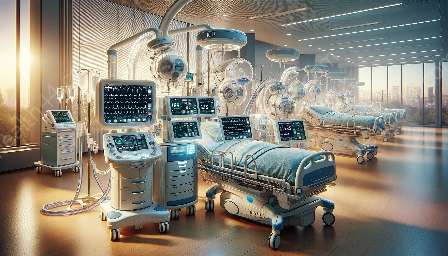When it comes to treating renal failure and supporting critically ill patients, the use of medical devices such as continuous renal replacement therapy (CRRT) machines has become increasingly relevant. These machines differ significantly from traditional hemodialysis machines, and their impact on life support systems is profound.
The Basics of CRRT Machines
CRRT is a form of dialysis used to support patients with acute kidney injury or severe renal failure. The process involves continuously removing waste products and excess fluids from the blood, providing a slow and gentle form of treatment that is better tolerated by critically ill patients.
CRRT machines have advanced features that allow for continuous blood purification, making them suitable for patients in intensive care units who require stable and gentle fluid management.
Key Differences Between CRRT and Traditional Hemodialysis Machines
While both CRRT machines and traditional hemodialysis machines are used to filter the blood and remove waste products, there are several notable differences between the two:
- Continuous vs. Intermittent: CRRT machines operate continuously, providing a slow and steady process of blood purification over an extended period. In contrast, traditional hemodialysis machines operate intermittently, typically for 3-4 hours per session.
- Fluid Management: CRRT machines excel in fluid management due to their continuous nature, making them more suitable for critically ill patients who need slow and gentle fluid removal. Traditional hemodialysis machines, on the other hand, are designed for rapid fluid removal during shorter treatment sessions.
- Preservation of Hemodynamic Stability: CRRT machines are better at preserving hemodynamic stability in critically ill patients, as they provide a more gradual and less abrupt shift in fluid balance compared to traditional hemodialysis machines.
- Filter Characteristics: CRRT machines use specially designed hemofilters suitable for continuous operation, while traditional hemodialysis machines use filters optimized for intermittent use.
Impact on Life Support Systems
CRRT machines play a crucial role in life support systems, particularly in the context of critically ill patients in intensive care units. Their ability to provide continuous and gentle blood purification contributes to maintaining hemodynamic stability and overall patient well-being.
Moreover, CRRT machines are compatible with various life support systems, integrating seamlessly with the complex care regimens required for critically ill patients. The gentle nature of CRRT minimizes the risk of hemodynamic instability, making it a preferred option for patients who are hemodynamically compromised.
Conclusion
Understanding the differences between CRRT machines and traditional hemodialysis machines is essential for healthcare professionals involved in the care of critically ill patients with renal failure. While both machines serve the purpose of blood purification, CRRT machines stand out for their ability to provide continuous and gentle treatment, significantly impacting life support systems in a positive way. As medical technology continues to advance, the use of CRRT machines in intensive care settings will likely become even more prevalent, further enhancing patient care and outcomes.


